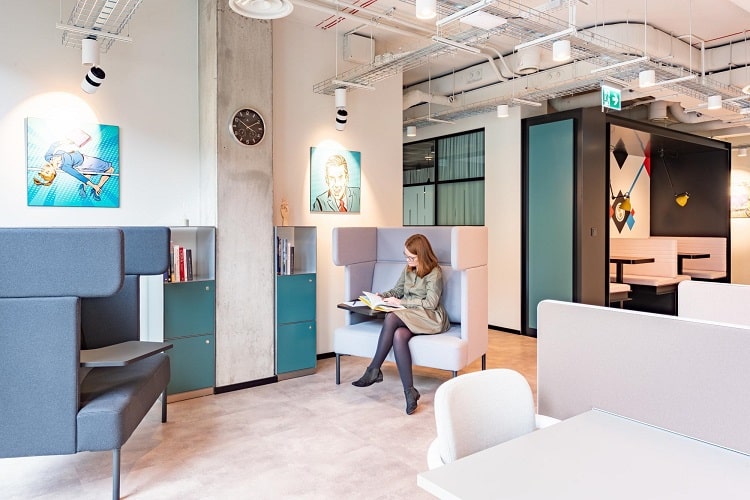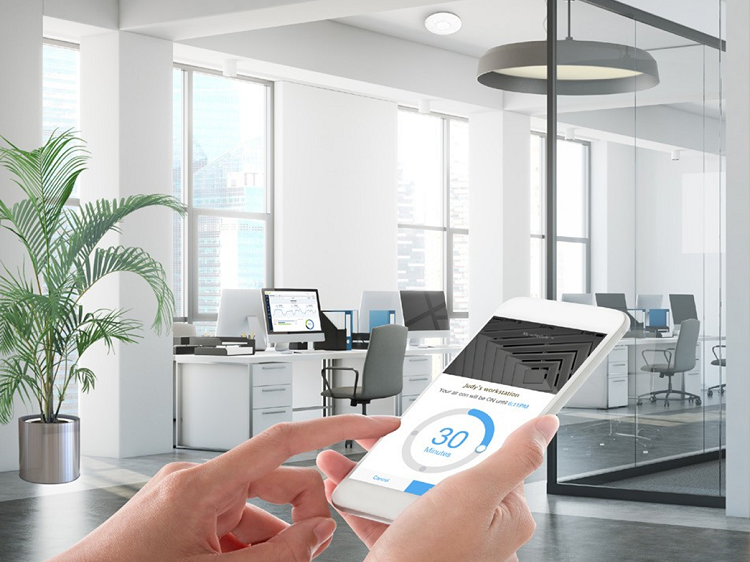HVAC On-demand / Wireless Lighting Control / Integration
Using Tech to Build a Seamless Hybrid Working Experience
The Transition to Hybrid
The popularity of hybrid working has been accelerated by the WFH movement during the pandemic. More workers are prioritizing flexibility and their personal well-being than ever before, which was not optimized by long commutes five days a week. The data support this movement: 79% of C-Suite executives plan on allowing for hybrid working if an employee’s job permits it.1 Additionally, while APAC employers restricted remote working to no more than 10% of their workforce prior to the pandemic, this figure is set to rise to over 50% in the coming years.2

WFH gaves workers ample control over their environment and freedom over where they worked (Photo: Time Magazine)
So what is hybrid working? Hybrid and flexible working are umbrella terms that encompass a wide range of workplace structures leaders can use to adapt to their employees’ newly uncovered priorities: more flexibility with regards to where, when and how they get their work done. On the other hand, physical offices will not completely disappear – leaders and employees both do not want to lose the collaboration, innovation, culture, and mentorship that office spaces generate.
What can hybrid look like?
Hybrid working will look different for each industry, company, department and worker. There is no one uniform hybrid model that all companies can adopt to suit their needs.
Many companies are looking to move their employees into co-working spaces as at least one of the spaces they will work at throughout the week. For example, last year Standard Chartered Bank signed a contract with Regus, a coworking space operator, allowing their employees to access any of the 3,500 Regus coworking spaces globally. Their system allows for booking by the hour, day, or month, with the option to choose between reserved seating or hotdesking.

A look into a Regus co-working space, one of 3,500 locations that Standard Chartered Bank workers have access to (Photo: OfficeFinder)
Other companies may be looking at other models for hybrid and flexible working such as the hub and spokes model, with a smaller downtown office “hub” and “spoke” branch offices closer to where employees live. While these models will vary, the need to provide a consistent working experience across all offices will be a shared challenge.
Major co-working companies already tend to provide seamless experiences across all of their locations, making it as easy to access the WeWork in downtown Beijing as it is to access the WeWork in your neighborhood in Hong Kong. Employers transitioning to hybrid working models will need to do the same, ensuring that employees are able to work as productively as possible in all office locations. Although there are physical elements to this, it simply isn’t feasible to design each office exactly the same. Instead, employers will need to build a consistent digital experience on top of a varied physical experience.
A consistent digital experience
Technology in the form of occupant apps/platforms can give employees a sense of consistency in the quality of experience they are receiving.
For example, workers can use the same platform to schedule meetings and book rooms no matter which location (in-house or shared) they are working from. Connecting that platform to the lighting and aircon with software like En-trak Smart Office can further enable automatic activation of those devices, preventing any confusion about methods of control (“Is there a timer? A sensor? Do I turn it off or will it turn off automatically?”).

The temperature for each room can be easily and intuitively adjusted using En-trak’s TEP app
The same is true for booking desks/workstations – a consistent process that grants both access and control over that environment, even enabling cooler/warmer temperature requests via mobile app.
With systems like these in place, employees can access and personalize any space without needing to understand the specific configurations, hardware or layouts of any one space. This approach also ensures that individual occupant preferences follow the occupant instead of the space, adapting to a more flexible working model.
Making office management easier
Such a consistent digital experience not only improves comfort, convenience and productivity for workers – it also allows companies to make smarter choices about their office needs. These software platforms can generate consistent and useful data across all offices – in some cases even external coworking spaces. Data on space utilization is extremely valuable for fine-tuning the overall hybrid approach over time – as much as employers might hope to do so, it is unlikely they’ll find the ideal balance right away.
Data about occupant activity, such as the temperature adjustment requests managed and monitored by En-trak Smart Office, can furthermore help companies to optimize energy use and carbon footprints, making net-zero targets less costly to achieve.
Hybrid working is here to stay. Companies may live or die based on their ability to get this transition right – productivity and talent retention are on the line. Managing and optimizing that transition with technology could be a matter of survival.
1Innovate or else: The economy of the future requires disruption | WeWork, 05 May 2021
2Asia Pacific Major Report – The Future of Work January 2021 | CBRE, 15 Jan 2021